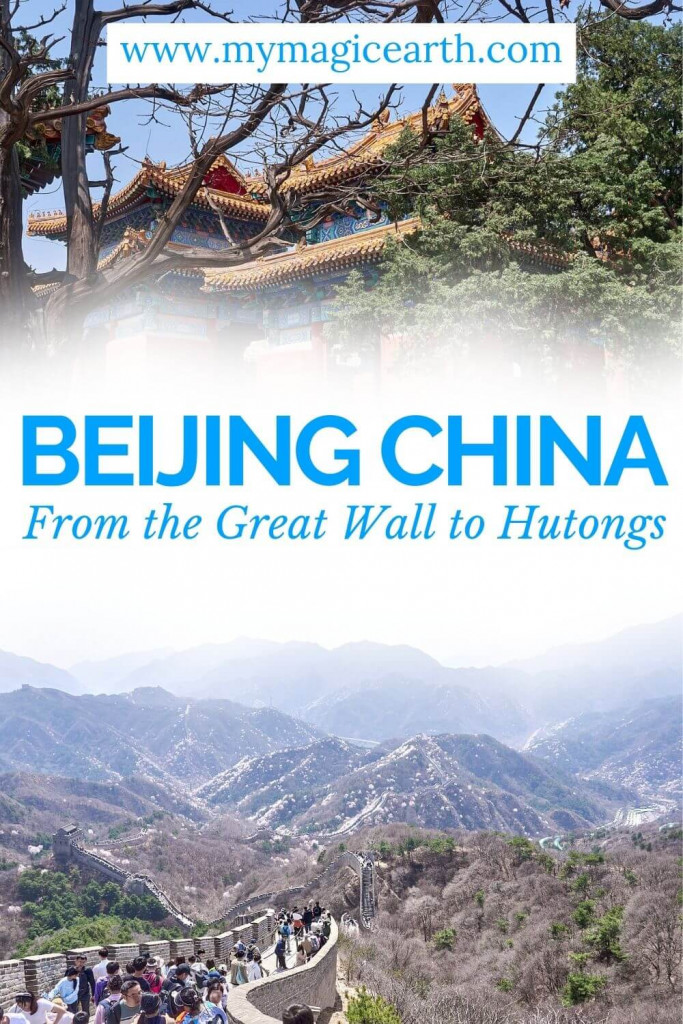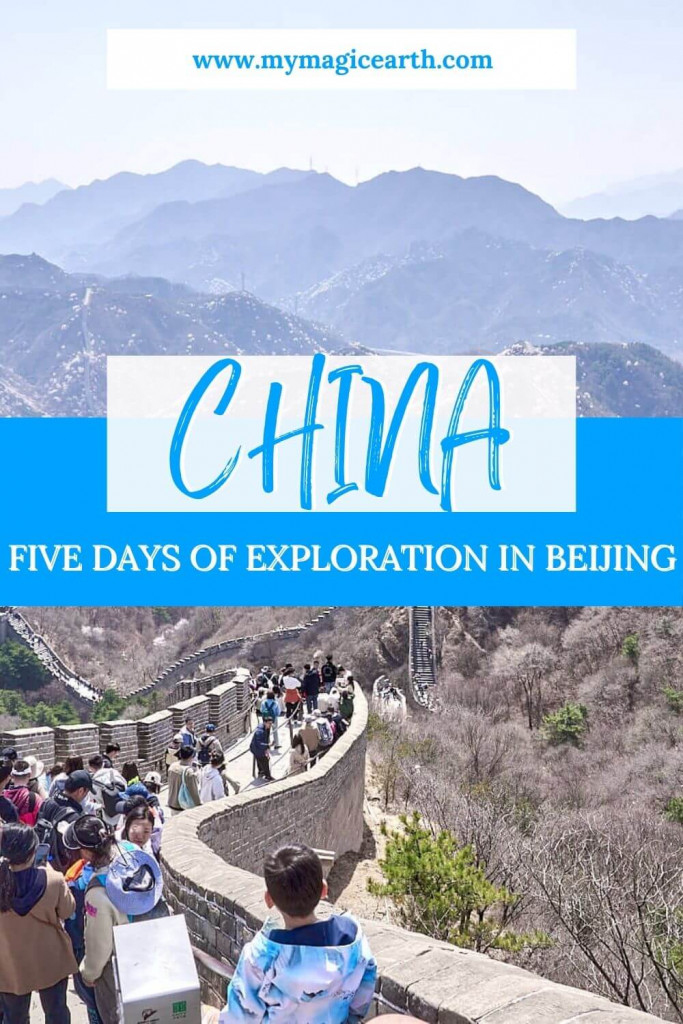Beijing, the capital of China, is in stark contrast to my hometown, Shanghai. From the tranquil elegance of the Temple of Heaven to the majestic grandeur of the imperial palaces, Discovery in Beijing is a journey through centuries of civilization. Throughout its illustrious past, Beijing has served as the political, economic, and cultural life for various Chinese dynasties, including the Yuan, Ming, and Qing.
My first visit to Beijing was for business, followed by a trip to introduce my German husband to the wonders of China’s capital. But it was my third visit, the one I’m about to recount, that held a special significance. I took my son along this time; he had only seen Beijing in his Chinese textbooks from his school abroad. In his history lessons at his German school, he had learned about the Great Wall and became fascinated by this northern city in China. Finally, during his Easter holiday, we seized the opportunity to explore Beijing together.
As we walked through the busy streets and admired the old buildings, I could feel my son getting more and more excited. It was a great time to be there, with the city looking beautiful in spring and everything feeling fresh and full of possibilities.
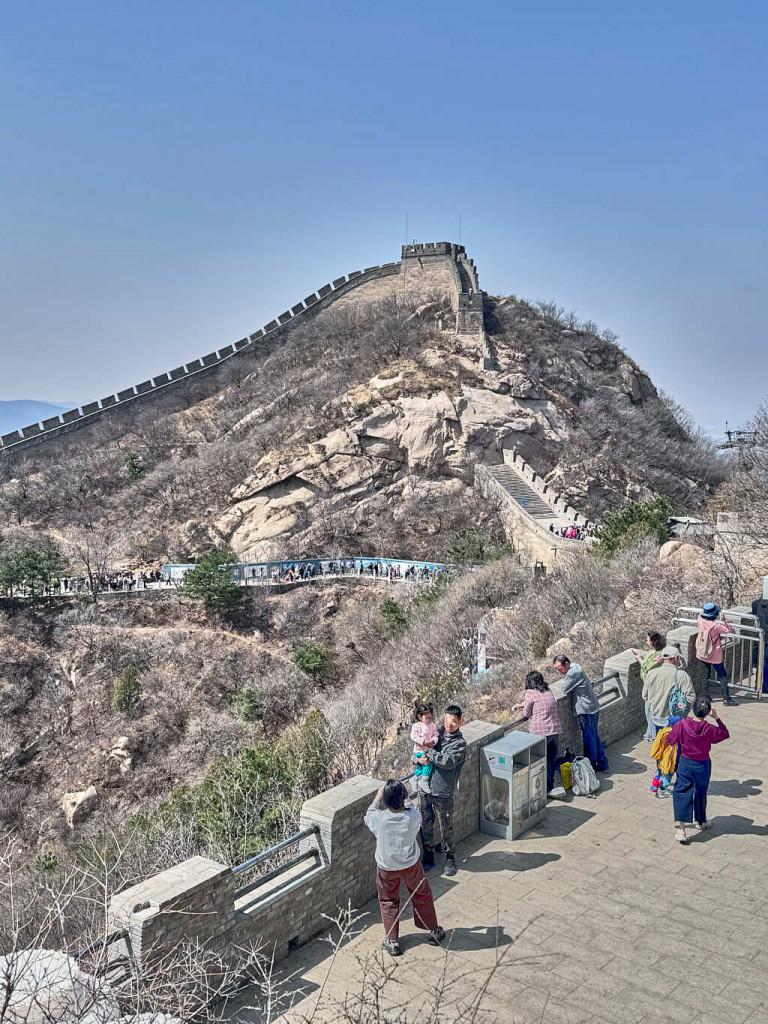
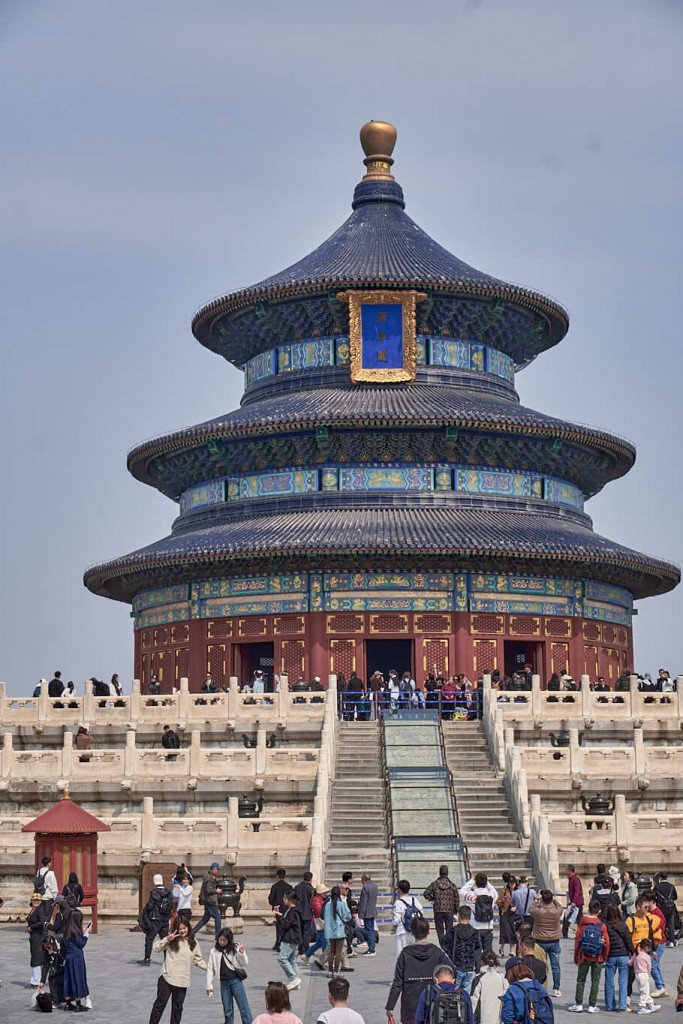
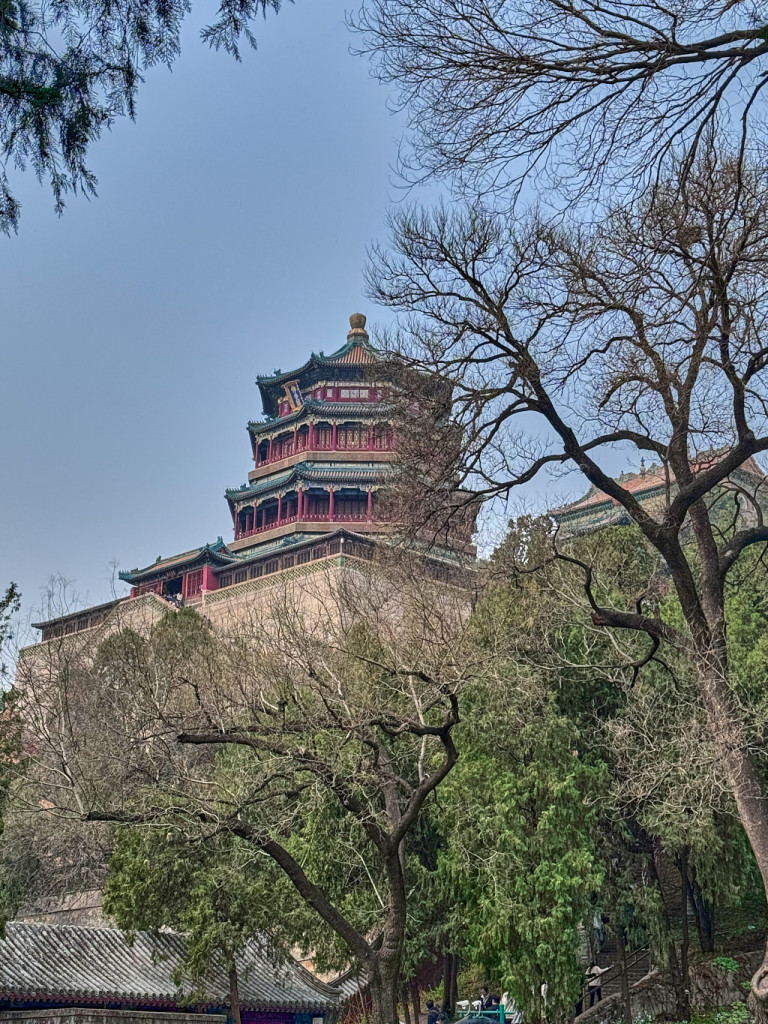
How we reached Beijing from Shanghai
We hopped on a Chinese high-speed train and in just four and a half hours, we arrived in Beijing from Shanghai. There are multiple train stations in Beijing, but we chose the route that took us to Beijing South Railway Station, departing from Shanghai South Railway Station.
Where we stayed in Beijing
The main attractions in Beijing are quite spread out, so to save time on travelling, I booked us into the Fairmont Beijing International Hotel, conveniently situated near a metro station and not far from Tiananmen Square. Surprisingly, it turned out to be excellent value for money.
Organized Entrance tickets to the major sites
In recent years, more and more Chinese people have been exploring different parts of China outside of national holidays. With a population of 1.4 billion, it’s easy to picture thousands of visitors at the Forbidden City on any given day. To preserve the historical sites and prevent overcrowding, many attractions now require visitors to buy tickets online in advance, with daily visitor limits in place.
A week before our trip to Beijing, I purchased tickets online for all the attractions we planned to visit, except for the Forbidden City. Despite our efforts, we couldn’t secure tickets for the Forbidden City during our entire stay in Beijing.
Itinerary of our Discovery in Beijing
- 1st Day: Wang Fu Jing (王府井), Tiananmen Square, Nan Chi Zi Street (南池子大街)
- 2ed Day: Temple of Heaven 天坛 and Beihai Park (北海公园)
- 3rd Day: Summer Palace (Yiheyua, 颐和园)
- 4th Day: BadalingGreat Wall (八达岭长城) and Jingshan Park (景山公园)
- 5th Day: Beijing Temple of Confucius (孔庙), The Imperial College (国子监), Drum Tower and Bell Tower (鼓楼钟楼), Shichahai (什刹海)
1st Day: Wang Fu Jing (王府井), Tiananmen Square, Nan Chi Zi Street (南池子大街)
Our train arrived at Beijing in the late afternoon. After checked in, we headed to pedestrian zone Wang Fu Jing to begin our discovery in Beijing. Many years ago, when I first visited this area, shops were old fashioned. Shops and vendors catering to the needs of nearby residents and visitors. Nowadays, Wangfujing transformed into a modern shopping destination, featuring department stores, boutiques, and international brands.
On the way to the Tiananmen direction, we passed the historic street Nan Chi Zi Da Jie” (南池子大街). It’s renowned for its traditional architecture and vibrant atmosphere. The street is also lined with small restaurants serving authentic Beijing cuisine.
Walking towards the south and at the end of the street, turn left is to the Tian An Men Square. Tired of walking, we decided to take the metro back to our hotel. But before entering the station, we realized it was the best place to take picture of the Tiananmen tower in the distance.
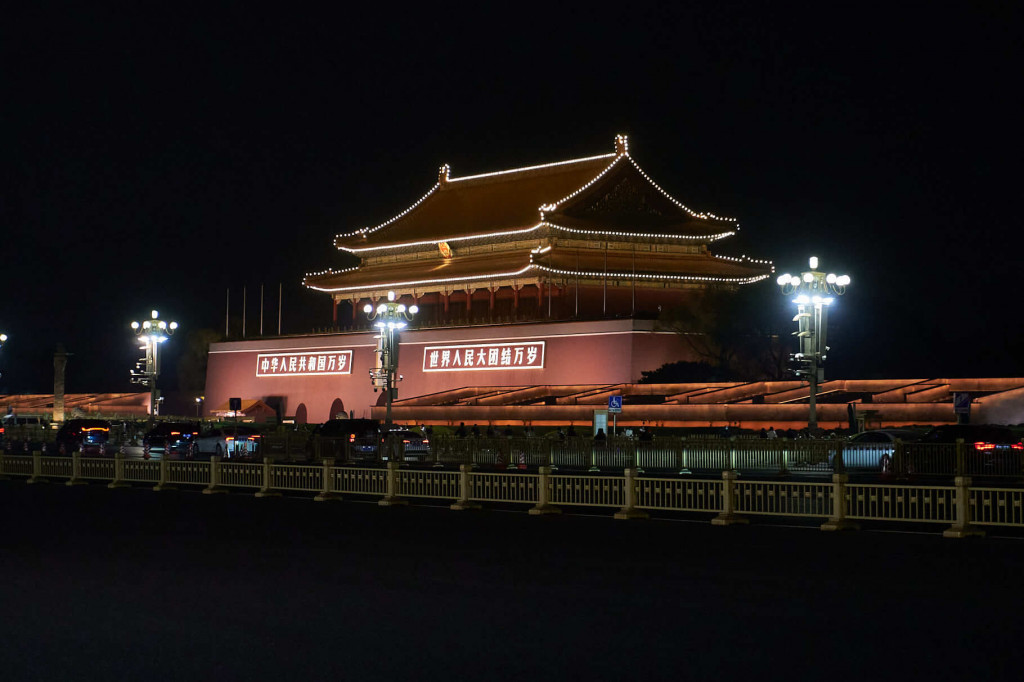
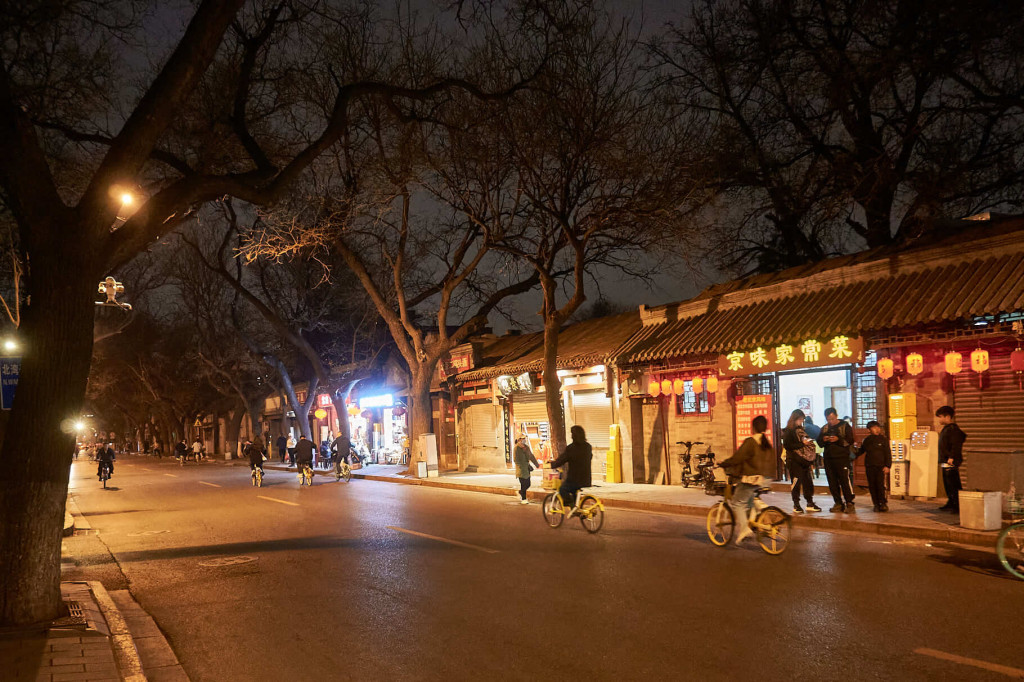
2ed Day: Temple of Heaven (天坛) and Beihai Park (北海公园)
Temple of Heaven (Tiantan天坛)
Temple of Heaven is also not far from our hotel, only a few stops of metro away.
The Temple of Heaven, known as “Tiantan” in Chinese, holds UNESCO World Heritage status and was a sacred site where Ming and Qing emperors conducted rituals for bountiful harvests and divine blessings.
Using the map we picked up at the entrance, we explored each area of the complex. Divided into three sections— the Circular Mound Altar, the Imperial Vault of Heaven, and the Hall of Prayer for Good Harvests— it has an impressive architecture, including the iconic triple-tiered roof and towering wooden pillars.
One fascinating feature is the Echo Wall, or “Huiyinbi” in Chinese, encircling the Imperial Vault of Heaven. It possesses unique acoustics, allowing sound to travel along its surface. Sadly, much of the wall was blocked, preventing us from experiencing this phenomenon firsthand.
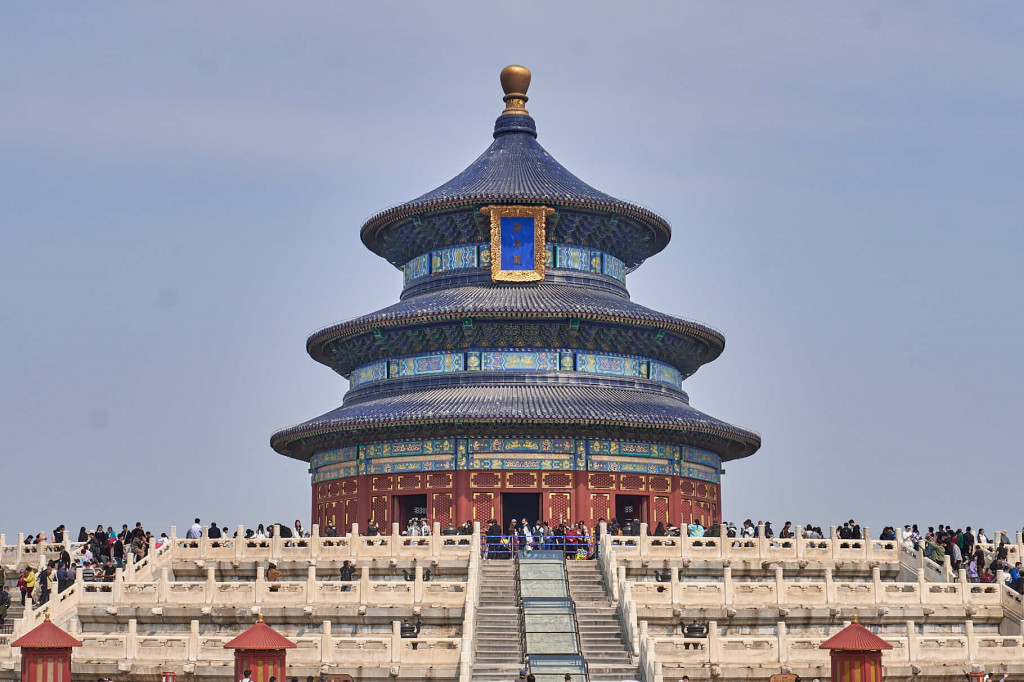
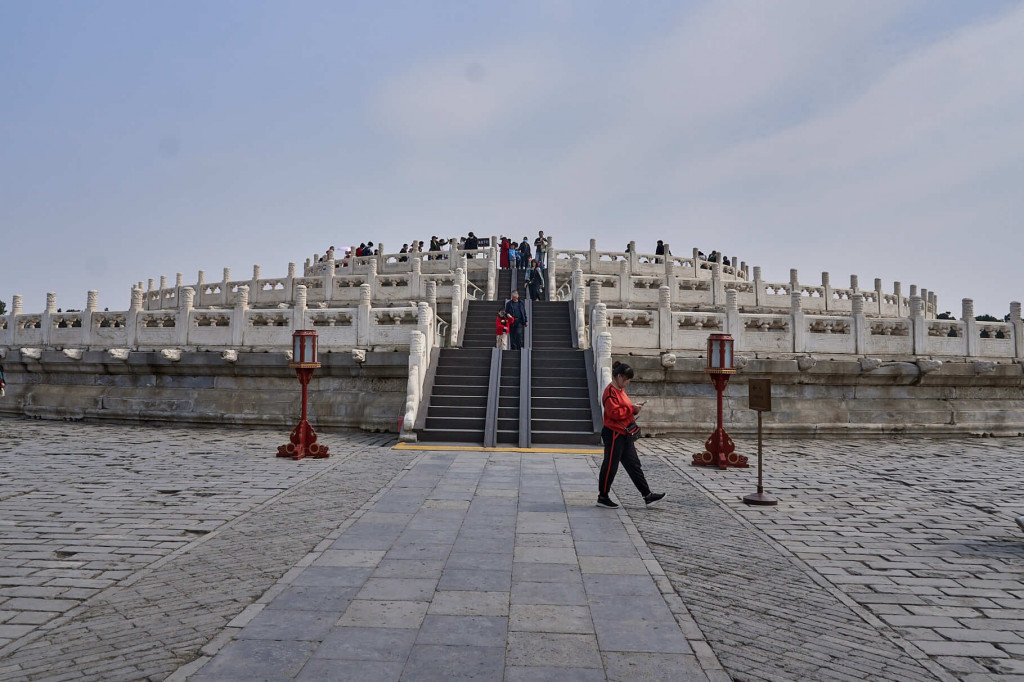
Beihai Park (Beihai Gong Zuan北海公园)
En route to our hotel, we made a stop at Beihai Park, an ancient imperial garden with a rich history dating back over a thousand years. One standout feature is the White Dagoba, a majestic Tibetan-style stupa crowning Jade Flower Island’s highest peak.
Unfortunately, the weather took a turn for the worse, making it impossible to capture clear photos or continue walking around the lake. With the wind picking up, we reluctantly decided to cut our visit short. It was disappointing as Beihai Park truly deserved more exploration.
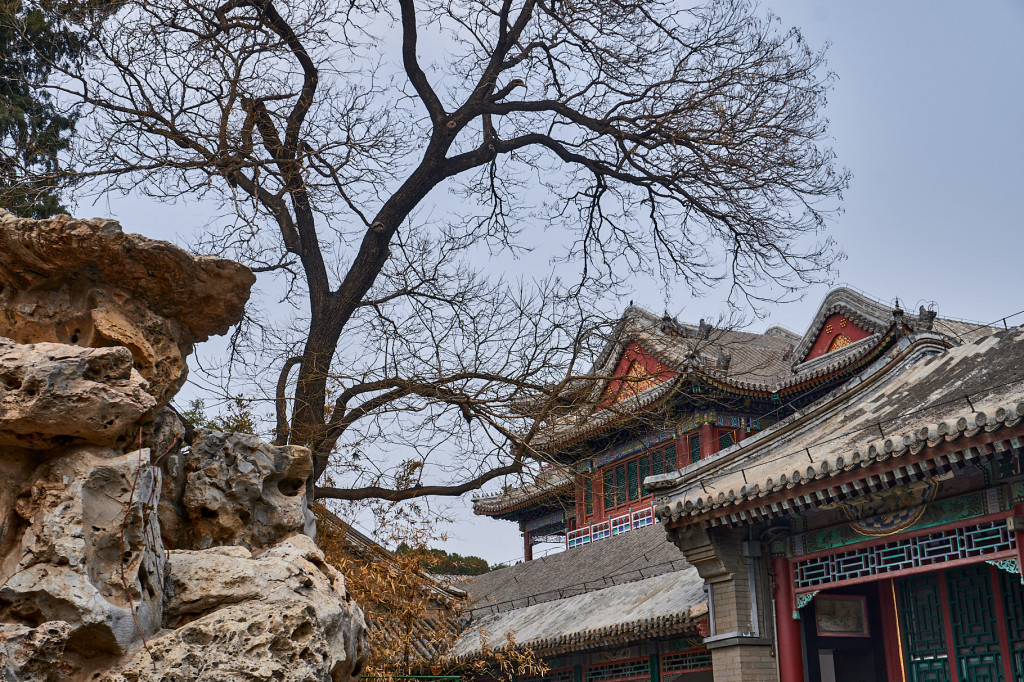
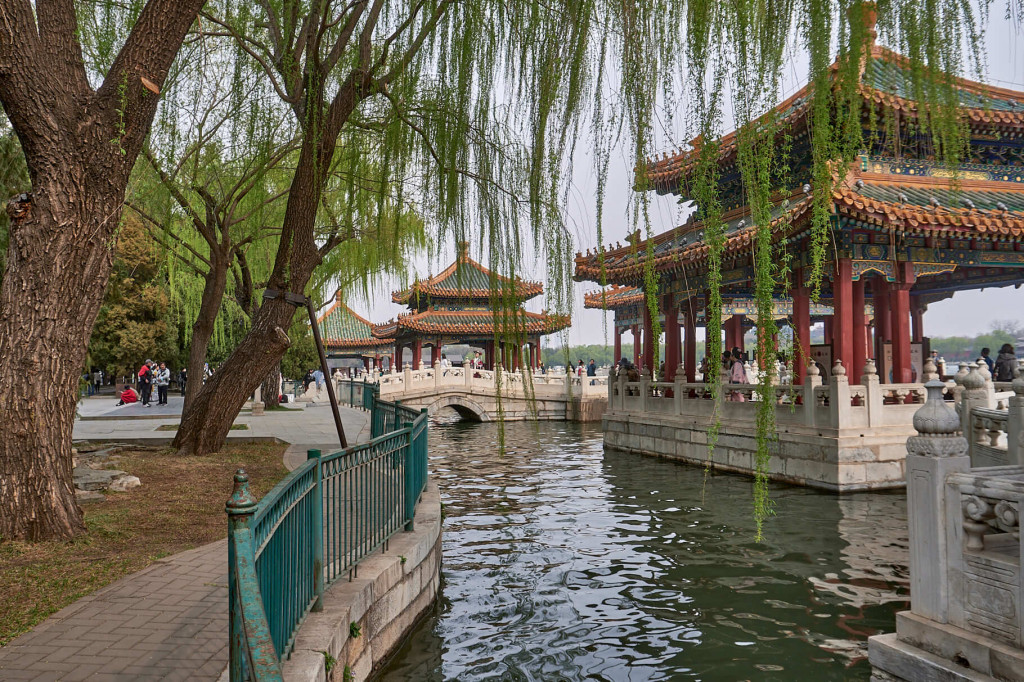
3th Day: Summer Palace (颐和园)
The Summer Palace, known as “Yiheyuan” in Chinese, is a UNESCO World Heritage site. Covering over 700 acres, its centerpiece is the expansive Kunming Lake, encircled by hills, pavilions, temples, and bridges. It served as a summer retreat for Qing emperors, a venue for entertaining guests, and a place for scholarly pursuits.
We entered through the east gate (东宫门) and immediately noticed the crowds. It dawned on me that it was the first day of the Chinese Qingming Festival (or Tomb Sweeping Festival), lasting three days. Since most visitors flocked to Longevity Hill, we headed towards the Seventeen-Arch Bridge (十七孔桥) instead. It proved to be a wise decision as there were fewer people. Afterward, we took a nearly empty boat to the north side at the foot of Longevity Hill.
Despite the cloudy weather, it was sweltering, with temperatures reaching 27 degrees Celsius and high humidity. Climbing the hill left us panting, and the stairs to the Buddhist Pagoda (Fuxiangge 佛香阁) were even more exhausting. It made me marvel at Empress Dowager Cixi’s stamina, considering her petite stature and age.
The winding pathways offered panoramic views of the surrounding landscape. Under the grey sky, the scenery of the Summer Palace remained unchanged.
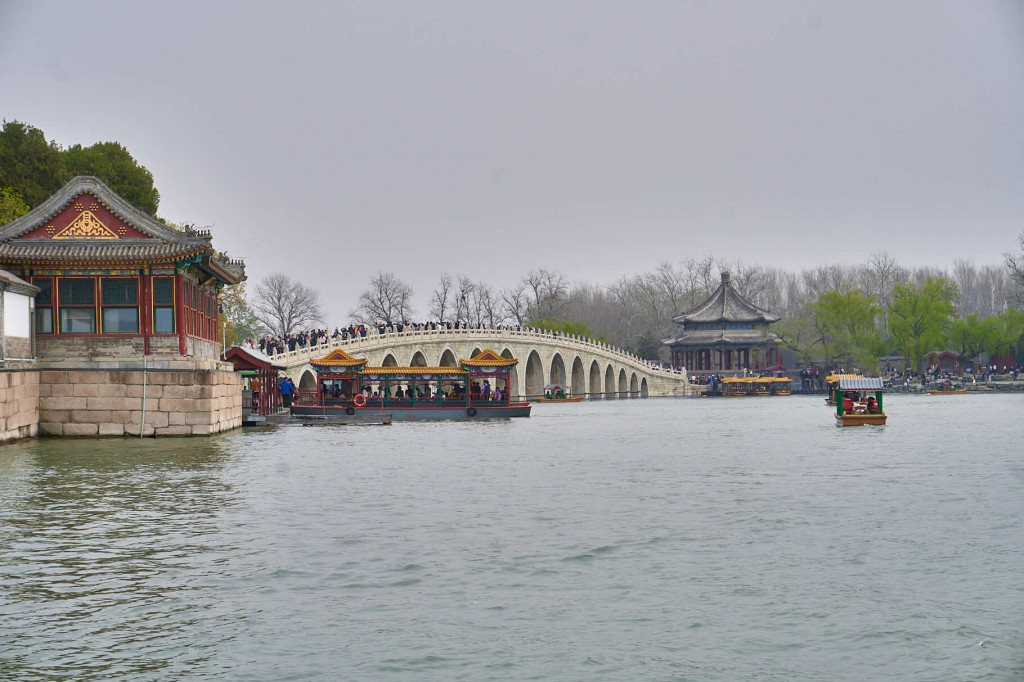
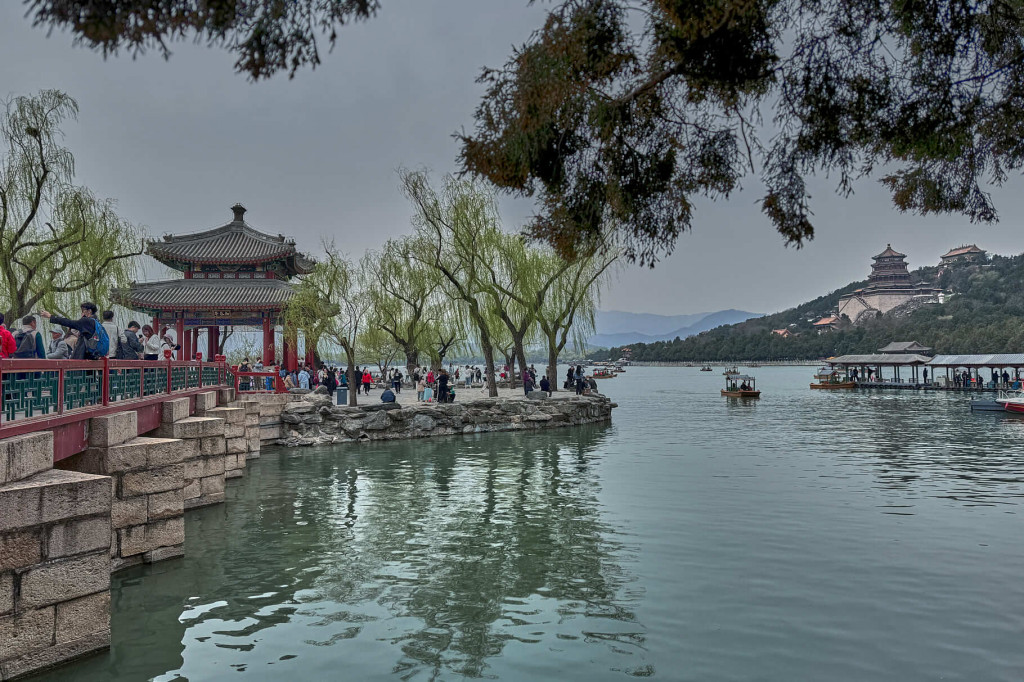
4th Day: Badaling Great Wall (八达岭长城), Jingshan Park (景山公园)
BadalingGreat Wall (八达岭长城)
Today was a big day for my son! We got up early to catch the bus from the Beijing tourism hub near Qianmen. It took us directly to the Badaling Great Wall cable car entrance. Our tour guide provided a detailed overview of the Great Wall and shared important information along the way. Despite her efforts to entertain us, many of us dozed off.
Unfortunately, the guide’s high-pitched voice through the loudspeaker, right next to my seat, gave me a headache and made me feel carsick. Nevertheless, we managed to purchase return cable car tickets from her. However, upon arrival, we had to queue for half an hour for the toilet and another hour to get on the cable car.
Finally, we were on the Great Wall! The sky had cleared up, but the sight of the bustling crowds was overwhelming. We were constantly urged to keep moving by security personnel through their amplifiers. As we approached the highest point of the Badaling Great Wall, Beibalou (北八楼), the crowd thinned out, allowing us to take some pictures.
From the top, we could see fewer people in the distance. However, navigating through the visitor flow would take longer. I almost regretted not choosing Mutianyu, another section of the Great Wall with fewer crowds. Still feeling carsick, my son began to worry about me and suggested we return to the cable car station.
We didn’t buy any souvenirs, but my son did taste the Great Wall popsicle, which was a bit pricey but tasted decent, according to my son. On the way back, we realized we had missed visiting the Great Wall Museum, which was included in the ticket. Nevertheless, we decided we would come back outside of Chinese national holidays.
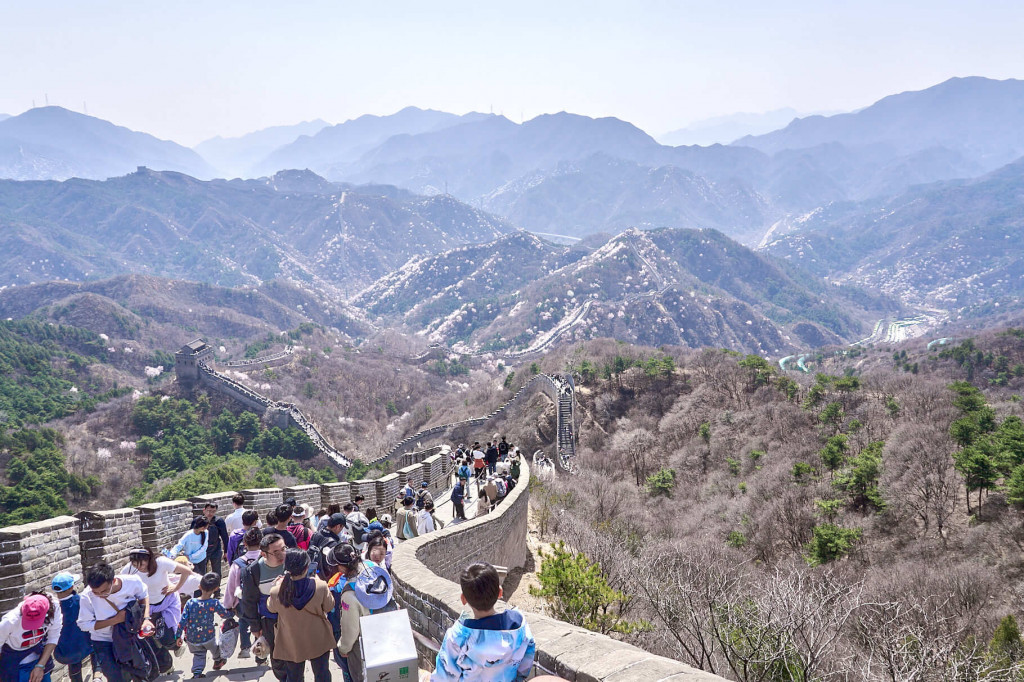
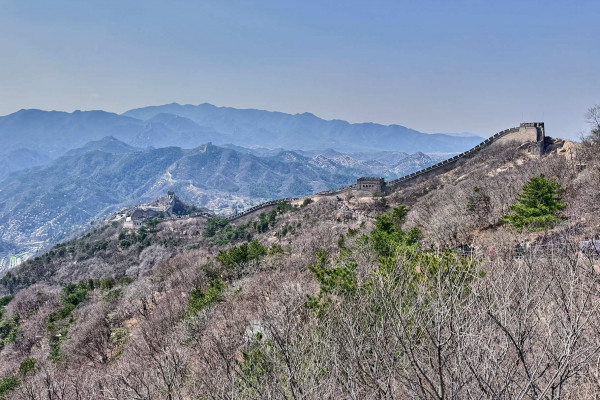
Jingshan Park 景山公园
We got off at the Beijing tourism hub near Qianmen, not far from Jingshan Park behind the Forbidden City.
Jingshan Park, dating back to the Liao and Jin dynasties, is a picturesque royal garden known for its peonies. Perched atop a hill in the park is a viewpoint offering panoramic views of the entire Forbidden City. Since we couldn’t visit the Forbidden City, we decided to take some pictures from the viewpoint.
It was late afternoon, and the digital board in front of the park displayed over 9000 guests in the park! It appeared that many, like us, had also been unable to enter the Forbidden City. The viewpoint became a consolation prize for the disappointment. We patiently queued our way up the hill and captured some photos from the top as the sun set.
5th Day: Beijing Temple of Confucius (孔庙), The Imperial College (国子监), Drum Tower and Bell Tower (鼓楼钟楼), Shichahai (什刹海)
Beijing Temple of Confucius (孔庙)
The Beijing Temple of Confucius, or “Kongmiao” in Chinese, is a sacred complex dedicated to honouring Confucius. Paired with The Imperial College, known as “Guozijian,” it offers a window into China’s rich Confucian legacy. The temple serves as a hub for worship, learning, and cultural exchange, hosting ceremonies, lectures, and exhibitions that celebrate Confucian philosophy and its profound impact on Chinese society.
We got off at Yonghegong metro station and walked casually to the Temple of Confucius. Whether it was the end of the Tomb Sweeping festival or just less touristic, there were only a few visitors there. After days of crowded places, it was nice to find a quiet spot to enjoy. The temple’s beautiful pavilions and gardens were ideal for taking photos.
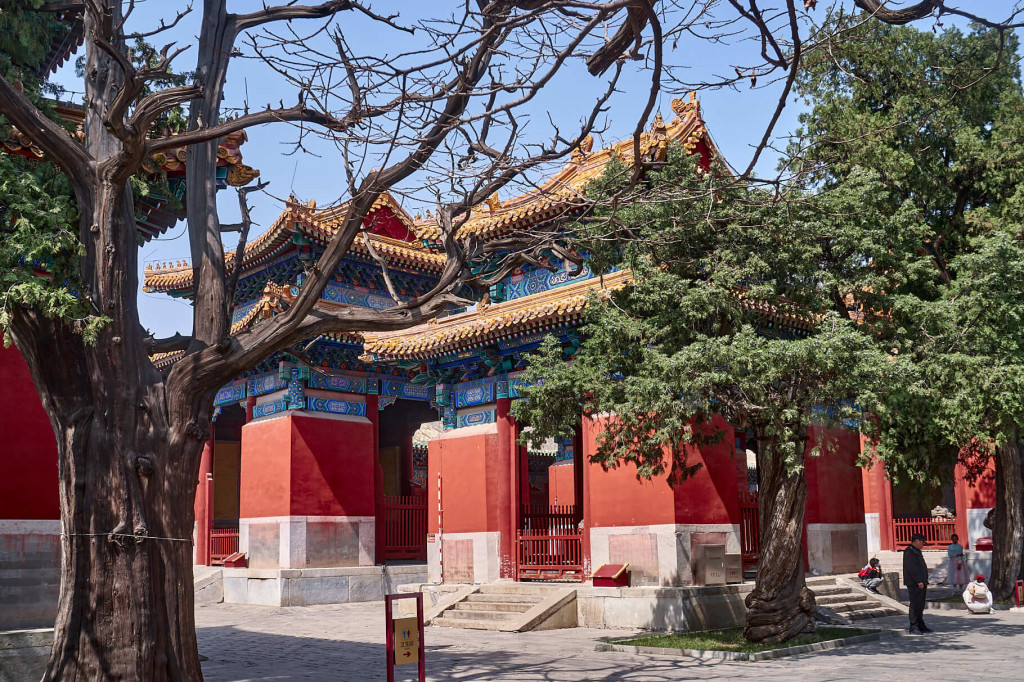
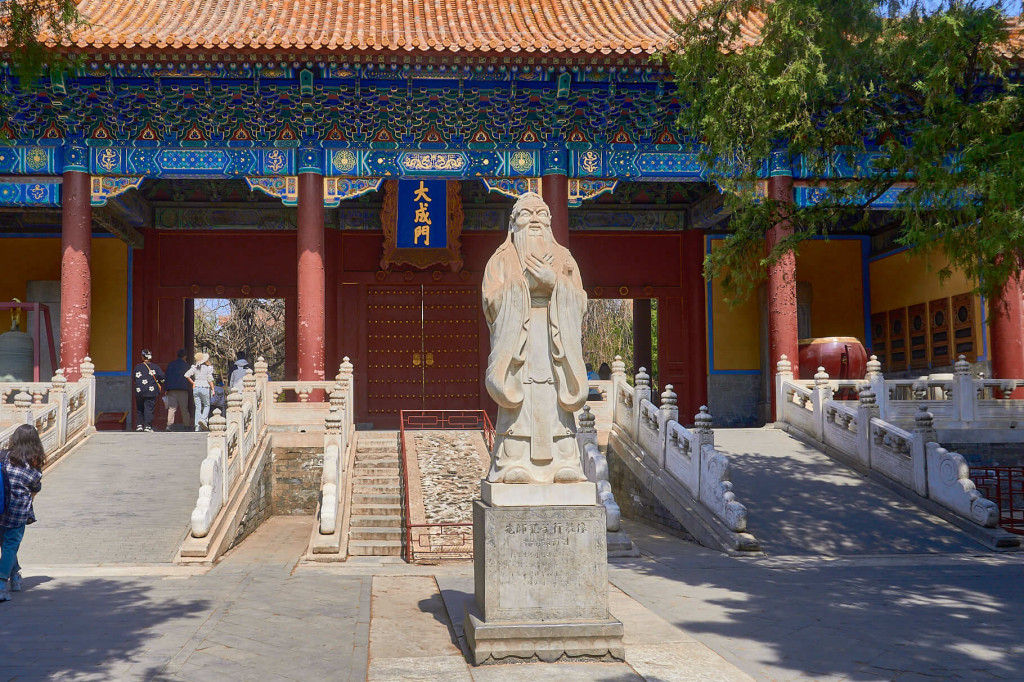
The Imperial College (国子监)
Next to the Beijing Temple of Confucius stands The Imperial College, also known as “Guozijian (国子监),” which functioned as the top educational institution in imperial China for over 800 years. It played a crucial role in training government officials and promoting Confucian scholarship and ideology. The college’s architecture embodies traditional Chinese design principles, with majestic halls, graceful pavilions, and serene courtyards evoking a sense of reverence and scholarship.
A notable treasure housed within the Imperial College is its collection of stone inscriptions, known as “steles.” These inscriptions cover a wide array of topics, including Confucian classics, historical records, biographies of esteemed scholars, and imperial decrees. They are valuable not only for their linguistic content but also for their role in preserving and transmitting traditional knowledge and wisdom.
In addition to their historical and educational importance, the stone inscriptions at the Guozijian are also considered works of art. Each inscription features different styles of calligraphy and decorative motifs. As I struggled to write calligraphy on paper, I couldn’t help but wonder at the difficulty faced by ancient artisans in carving text into stone using traditional tools and techniques.
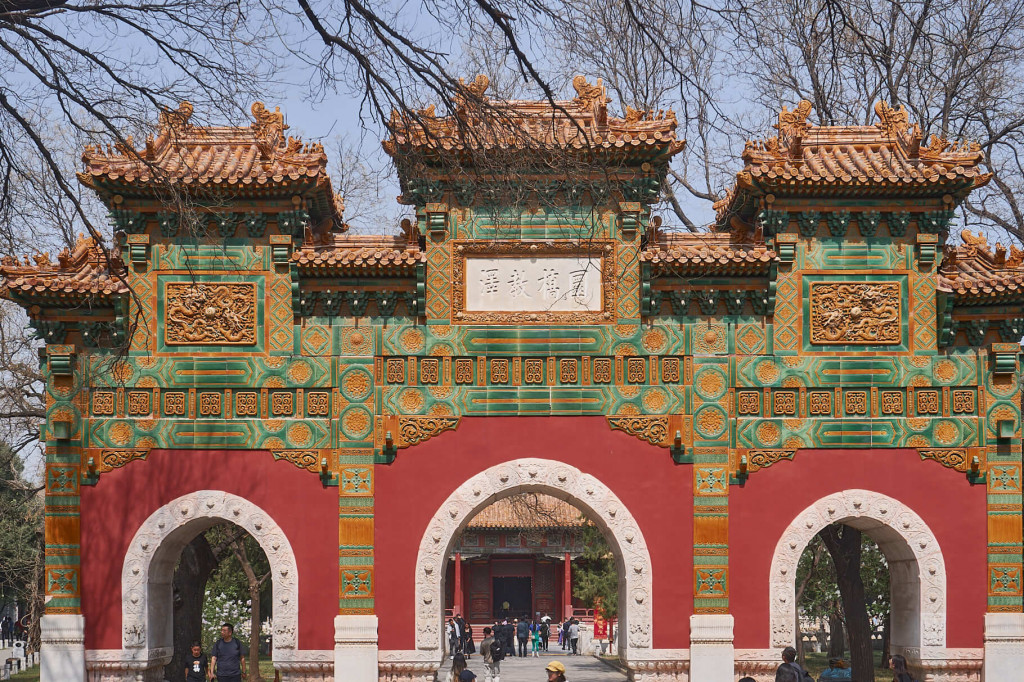

Guozijian Street (国子监大街)
We stepped out onto Guozijian Street, a renowned Hutong (胡同) in Beijing, alongside the red wall of the Temple of Confucius and The Imperial College. It was clear that the wall had become a popular spot for TikTok enthusiasts, mostly young girls, who stood against it, creating videos. However, despite the commotion, the striking contrast of the red wall against the backdrop of the buildings is worth capturing in a few photographs.
Drum Tower and Bell Tower (钟楼 鼓楼)
We followed Guozijian Street (国子监大街), passing through several Hutongs, until we reached the Drum Tower and Bell Tower in less than 30 minutes. Positioned at the northern end of the city’s central axis, these towers once served as vital timekeeping devices in ancient Beijing.
At the northeast corner of the Drum Tower, a door leads to a stone staircase of 69 steps, granting access to the top. Meanwhile, the Bell Tower, adorned with a large bronze bell, played a crucial role in timekeeping. Its features an elegant wooden structure and traditional Chinese roof tiles.
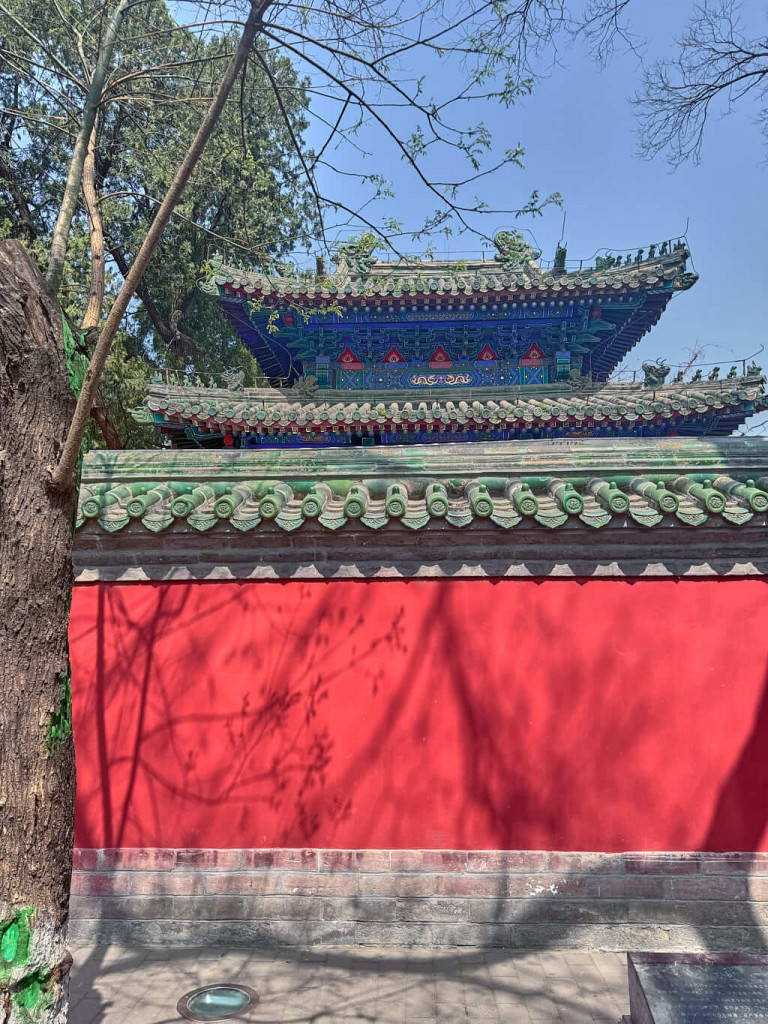
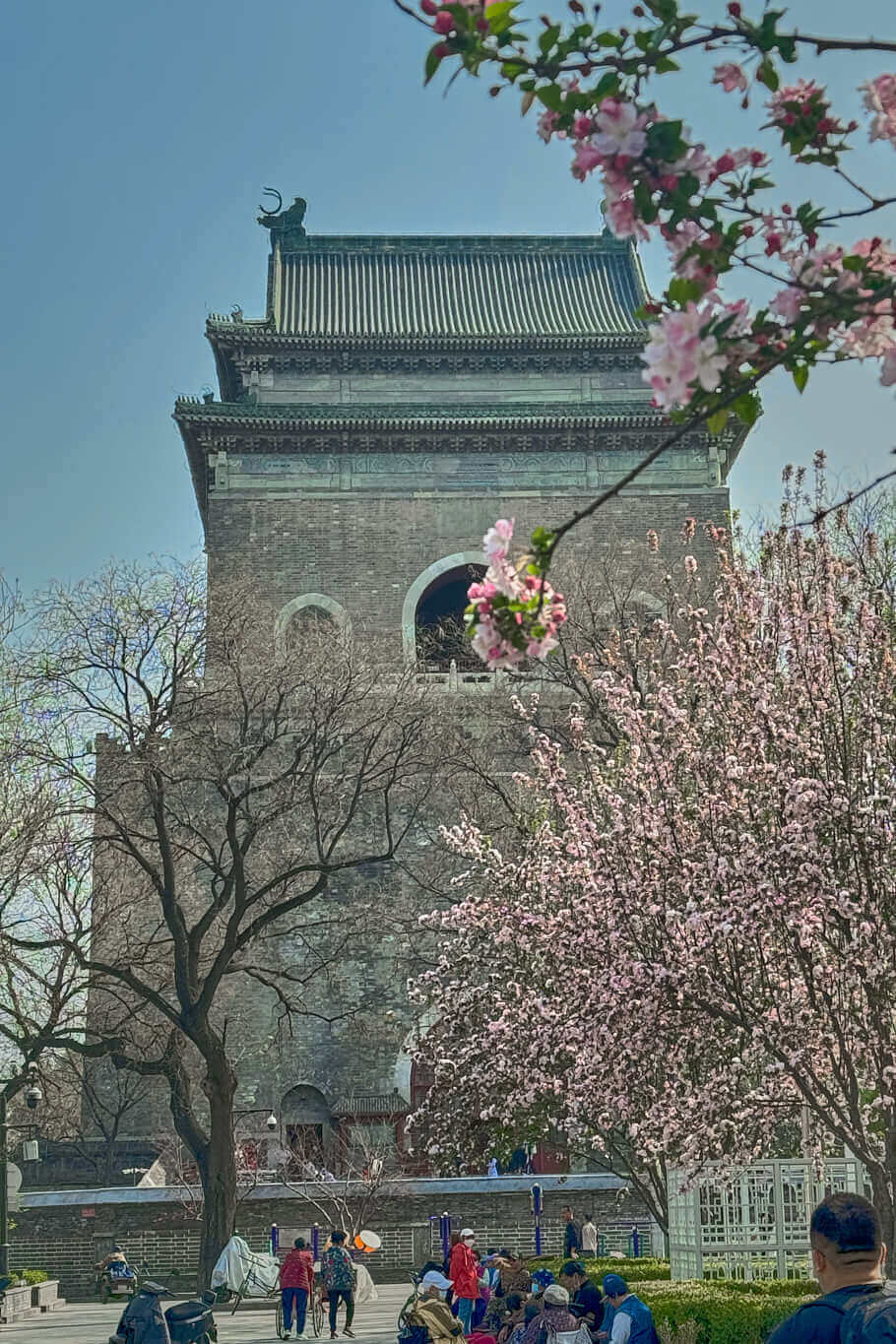
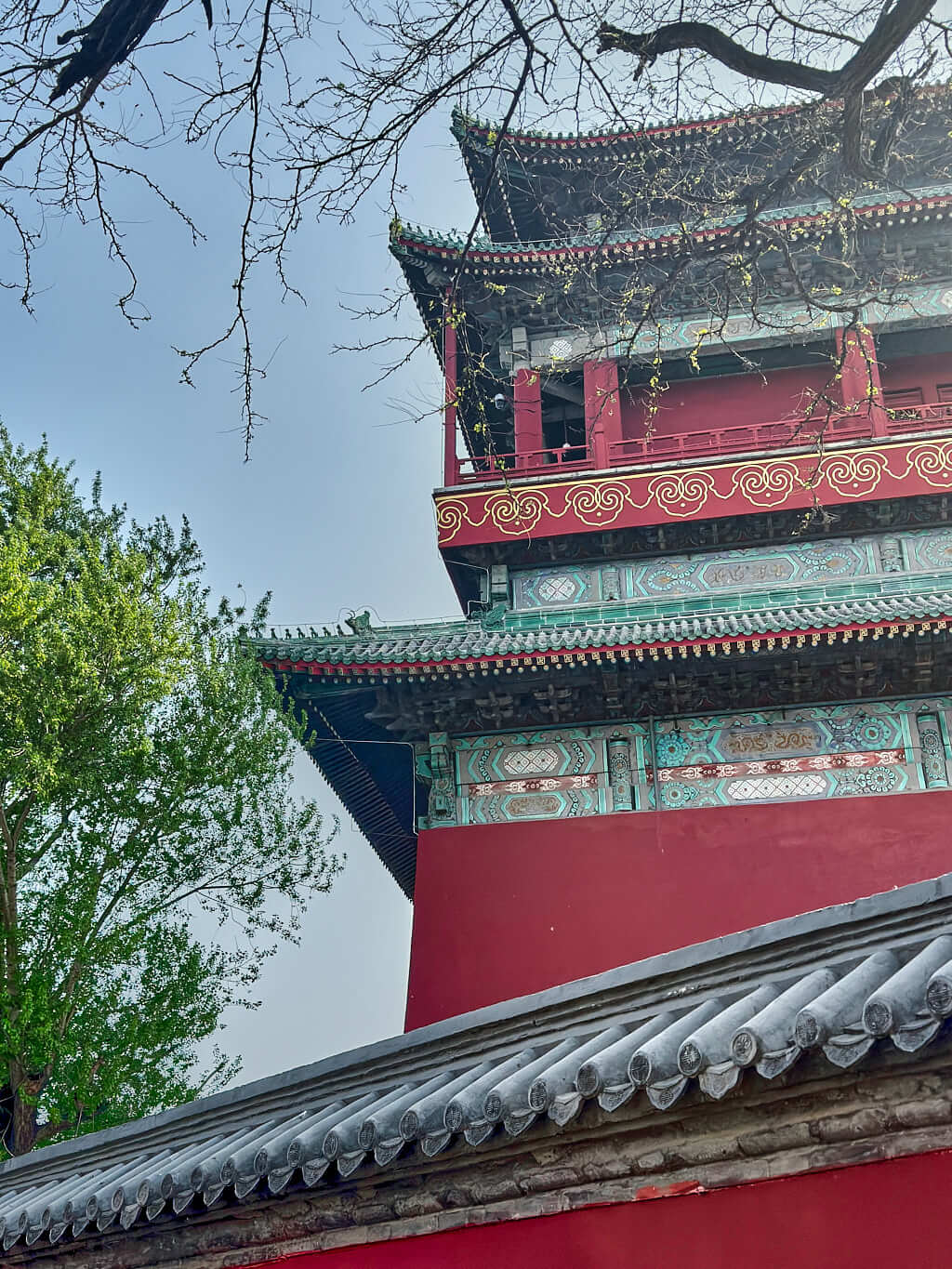
Shichahai (什刹海)
From the Drum Tower and Bell Tower, it only took us a few minutes to reach Shichahai, a historic scenic area renowned for its picturesque lakes, traditional hutongs, and historic sites.
En route, we passed the famous Smoking Pipe Byway (Yandai Xie Jie 烟袋斜街), one of Beijing’s oldest hutongs. Yandai Xiejie’s name recalls back to the Qing dynasty, when the street bustled with stores selling tobacco and pipes.
Shichahai is a lively place, surrounded by hutongs dotted with small shops offering local snacks. Along the lake, numerous music bars line the waterfront. Despite the lack of daytime customers, the singers entertain continuously, attracting passersby who stopped to enjoy the music briefly. After exploring several hutongs and strolling along the lake, we headed back to the hotel and ended our discovery in Beijing.
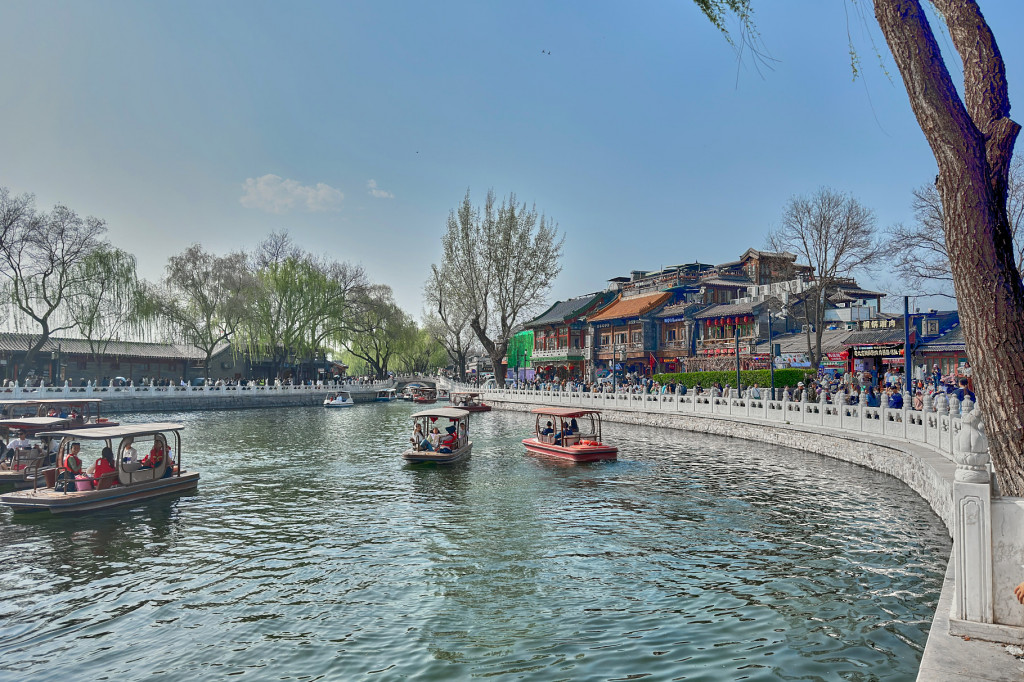
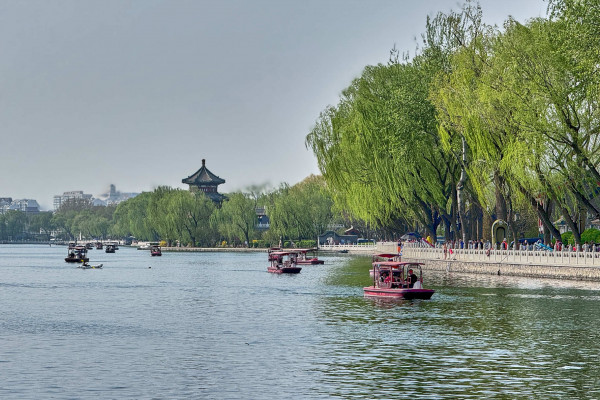
Travel tips for Discovery in Beijing, China
- Before embarking on your walk, it’s essential to plan your route carefully to avoid retracing your steps unnecessarily.
- The public transportation system in Beijing differs from that in Shanghai. Without a local ID card, you can’t purchase tickets from the machine. However, you can visit the service counter to buy metro tickets in cash.
- For top attractions like Tiananmen Tower, Maozedong Maoseleum, and Forbidden City, online reservations via WeChat mini programs are essential. However, as a foreigner without WeChat payment, this option isn’t available. Before your trip, it’s wise to check the websites of these sites for updated ticket reservation information.
- To ensure a hassle-free discovery in Beijing, I recommend booking a tour in advance through online platforms. This allows you to plan your itinerary better and gain insight into the sites’ stories and cultural significance from knowledgeable guides. Alternatively, your hotel may offer Beijing tours, although they tend to be pricey.
- For other attractions like the Great Wall, you can try your luck by purchasing tickets onsite. No pre-reservation is required for entry into most local parks.
- You only require one ticket for both the Beijing Temple of Confucius (孔庙) and the Imperial College (国子监) as they are interconnected.
- The Summer Palace is vast, making it impossible to explore entirely in a single day. It’s advisable to purchase an admission-only ticket initially. If you have spare time, you can buy tickets for additional attractions on-site.
